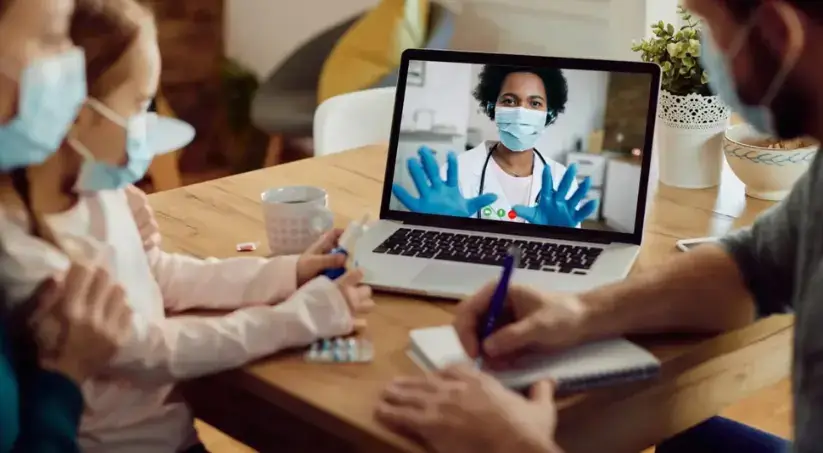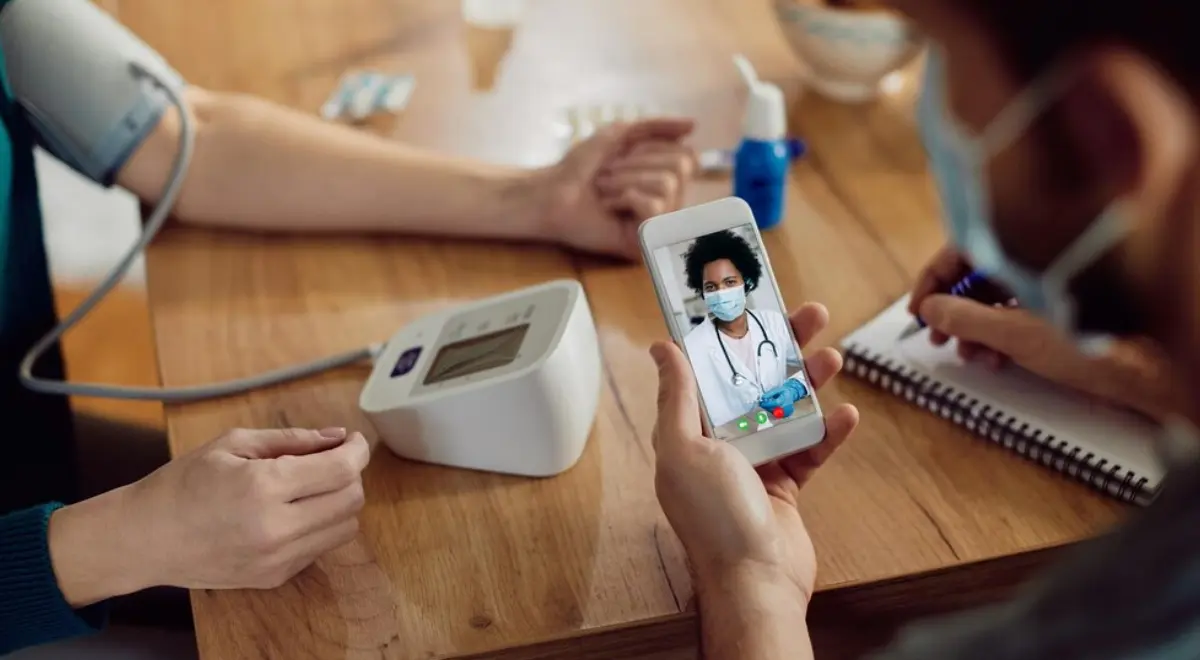How Patients and Providers Benefit from Remote Care Solutions?

The traditional means of healthcare system comes with a visit to the hospital or clinic in case someone doesn’t feel well. Consulting a doctor was almost as a job that needs an appointment and ultimately consumes time for both doctor and patient. On the other hand, it is also expensive since the patient needs to travel all along to see the doctor. When you feel to travel to consult a doctor, you may feel lazy and probably ignore visiting a doctor unless the disease becomes severe and aggravate.
Here thrives remote patient monitoring (RPM) – underlies chronic care management, which has tremendously brought a new trend in the IoT (Internet of Things) by changing the healthcare model. It has turned hospital-centered into home-centered. Ultimately, along with the time, it becomes cost-effective since the patients do not have to pay for travel. At the same time, easy accessibility to the doctor does not let to ignore consulting a doctor.
Table of Contents
ToggleHealthcare Software Development Companies
Several leading software development companies seek to develop remote patient monitoring software to facilitate chronic care management. It caters to several patient’s conditions. According to the statistical analysis, the clinical stakeholders support the remote monitoring system and according to “Research and Markets”, the RPM equipment market is likely to grow from $1.5 billion in 2018 to $2.7 billion by 2022.
Digital Technology Involved in Remote Patient Monitoring
Of course, remote patient monitoring is an unconventional system to consult a doctor. However, everything, including data and communication, is controlled, handled, and managed by digital technology; it is also called telehealth technologies. Precisely, it enables us to stay at home and receive medical care and consultation.
You must be wondering what healthcare data can be monitored using remote patient monitoring telehealth technology, here are a few examples:
- Blood pressure
- Heart rate
- Weight
- Blood sugar level
- And much more
The following patients can have benefited from chronic care management:
- Post-surgical patients
- Patients from rural areas since they have limited access to healthcare centers
- Elderly patients
- Patients with chronic illness
The common architect of the remote patient monitoring comprises of the following parameters:
Data Analysis Application:
It generates patients’ details and notifies caregivers, healthcare providers, and sometimes the patients too.
Centralization
It integrates data retrieved from all the sources, such as analytic systems, patient devices, and EHR.
Sensors
Sensors are set up on the portable and wearable medical devices to gauge health conditions’ parameters, such as ECG, sleep, heart rate, blood oxygen levels, temperature, weight, blood pressure, etc.)
Applications of Remote Patient Monitoring & Chronic Care Management
The applications of remote patient monitoring and chronic care management are diversified and related to one another. These applications cater to a variety of stages and diseases; from the prevention and detection to the control and management.
Controlling Diabetes – Chronic Care Management
Diabetes is an increased sugar level; in other words, ups and downs of blood glucose level, and can even cause severe complications. Therefore, it is essential to control and manage it. In the case the patient has diabetes, the patient must be aware of his/her weight, temperature, and blood pressure all the time to prevent hypo and hyperglycemia. Diabetes leads the body to loosen its self-defense and restricts to self-repair. Other complications include diabetic foot ulcers.
For instance, the Department of Veterans Affairs uses RPM technology to detect diabetic foot ulcers among veterans. Likewise, Podimetrics SmartMat adopts thermal imaging to collect foot temperature and clinical decision tools for scanning.
Heart Failure Prevention
Smart pacemakers and cardiac resynchronization devices are the application of remote patient monitoring. To deal with chronic care management, these applications help to decrease the risk of heart failure. The information retrieved is analyzed and showcase the patterns to keep the patients’ quality life stable and improving, ultimately, decreasing the mortality rate. At the same time, complex AI telehealth algorithms and machine learning applications evaluate heart health using an electrocardiogram.
Falls Prevention
Dementia and Alzheimer’s disease are the most common and disastrous diseases throughout the world, especially among the elderly. They completely become dependent on their family and caregivers. Here thrives remote patient monitoring and chronic care management.
The RPM aims to monitor the patient’s activities and engage them in certain activities, such as walking, being social and talking with a real person. Scientists have also created an innovative cane; this cane is able to retrieve relevant data about the patient, including weight.
Real-time remote patient monitoring
As a constructive constituent of chronic care management, RPM is a preventive measure that can be accessed using sensors and handy mobile devices. It detects changes and abnormal symptoms at an early stage. Chronic care management includes early treatment to avoid helpless expensive treatment.
Also Read, Benefits of remote patient monitoring
How RPM Relates to The Chronic Care Management?
The scientific innovations are likely to keep improving with new inventions. Within this process, the absolute potential can be seen within the healthcare sector. Chronic care management is a significant factor for the patients and their loved ones. All the applications mentioned above are part of the chronic care management strategy. Since the innovations are thriving and moving towards the advancements, the telehealth sector strives to provide the best and the reliable sources to detect the early symptoms, enabling the healthcare professionals to practice remote patient monitoring using digital technology. RPM empowers the reach to the patient in numerous ways that are feasible for doctors and patients.
Chronic pain, such as arthritis, diabetes, fibromyalgia, back pain, etc., are hard to treat; the healthcare specialists’ team can better manage them. The specialists use techniques to reduce pain using chronic care management. However, the preferable option is remote patient monitoring.
The telehealthcare model adheres a few challenges, especially in the following cases:
Taking the telehealthcare instructions seriously
Since most patients are habitual to visit the doctor for consultations, they don’t take instructions using technology seriously. As a result, they can’t adopt the new clinical setting, neglect their dietary plan and ignore medication intake.
The inability of using digital technology
Since the doctors are comparatively intelligent than the elderly patients, it is quite challenging for the patients to set up the device ready for RPM at home.
Privacy and Security
Since the remote patient monitoring system is network-based, it is prone to be attacked by the cybercriminals and hackers. Therefore, it is important to make the software fully protected.
Most recent blogs
Categories
- Advanced Primary Care Management
- Behavioral Health Integration
- Cellular Remote Patient Monitoring
- Chronic Care Management
- Chronic Care Management Billing
- Chronic Care Management CPT Codes
- Chronic Care Management Program
- Chronic Care Management Software
- Digital Health Platform
- Principal Care Management
- Principal Care Management CPT Codes
- Remote Care Programs
- Remote Monitoring Devices
- Remote Patient Care
- Remote Patient Monitoring
- Remote Patient Monitoring Billing
- Remote Patient Monitoring CPT Codes
- Remote Patient Monitoring Devices
- Remote Patient Software
- Remote Therapeutic Monitoring
- Remote Therapeutic Monitoring Billing
- Remote Therapeutic Monitoring CPT Codes
- Telemedicine & RPM
- Transitional Care Management
- Transitional Care Management Billing
- Transitional Care Management CPT Codes
Related Posts
- February 21, 2025 | Read Time: 5 mins
RPM’s Role in Identifying Early Symptoms of Chronic Conditions for Prevention
- February 14, 2025 | Read Time: 4 mins
Monitoring Post-Surgical Recovery With RPM Systems
- February 10, 2025 | Read Time: 5 mins






